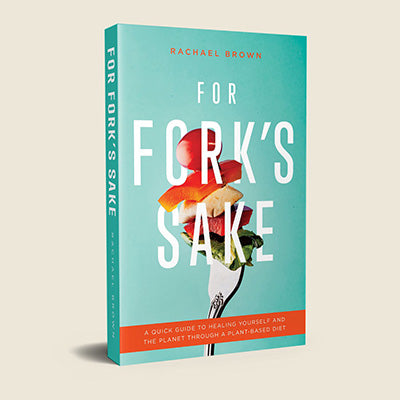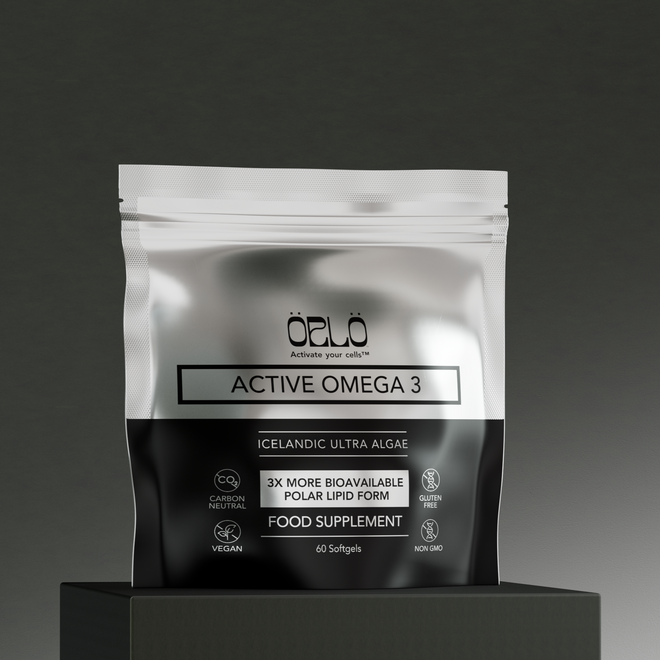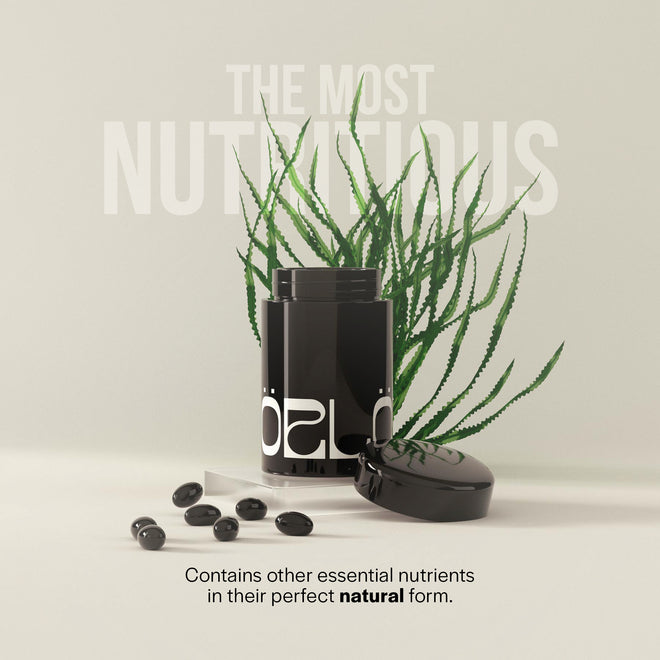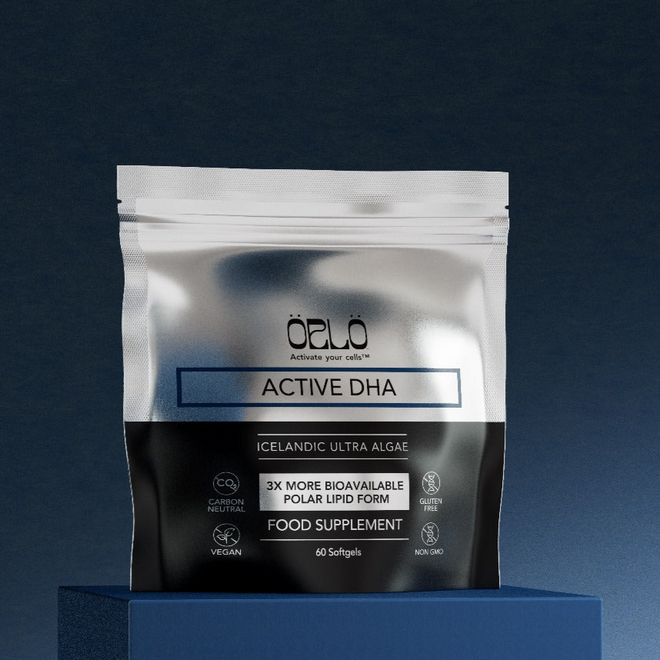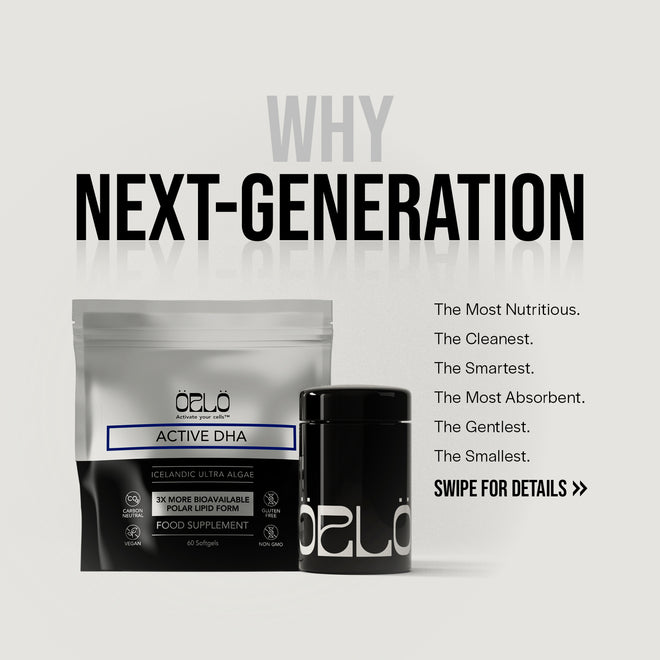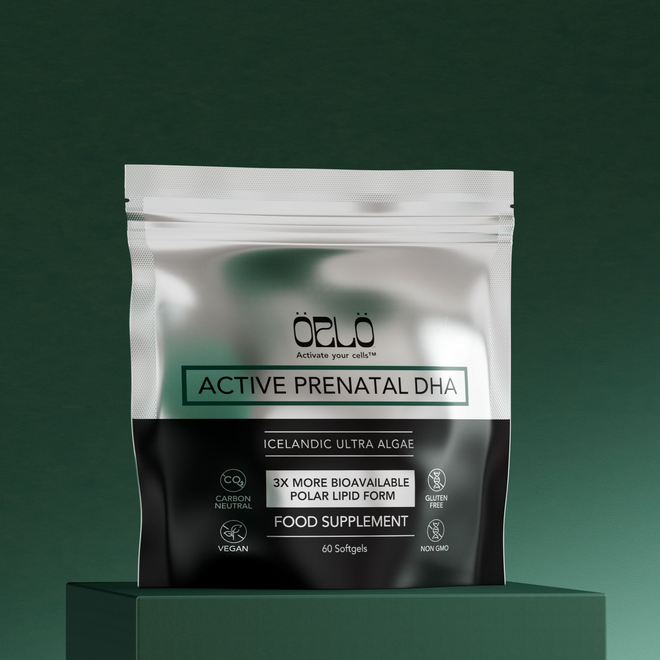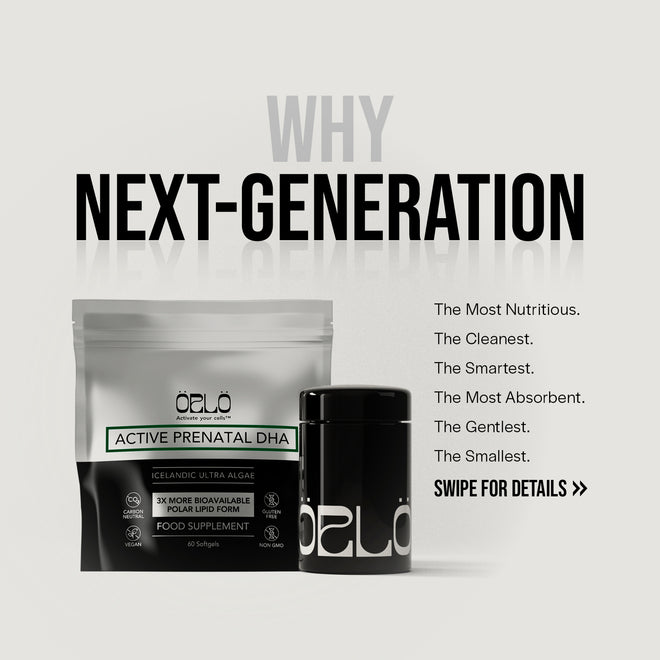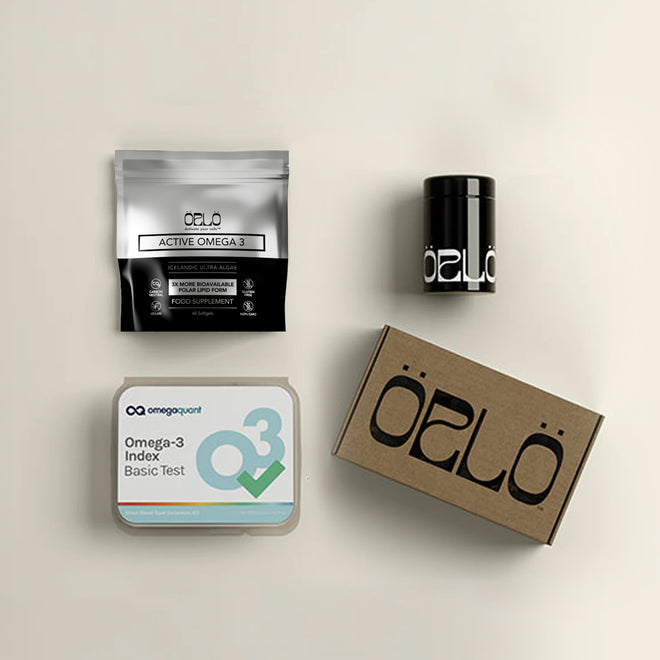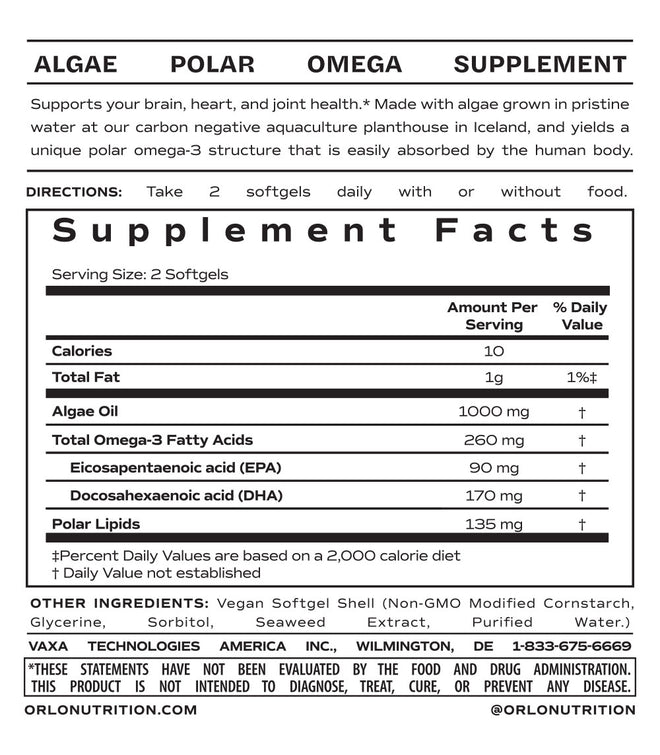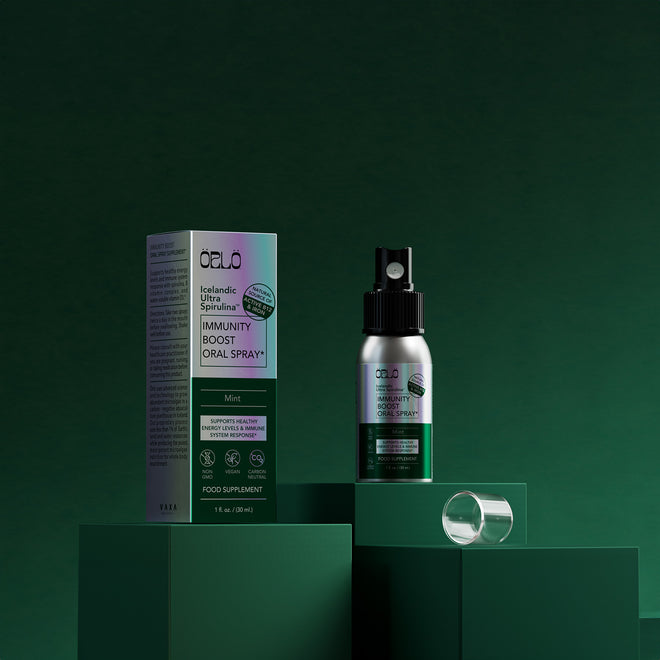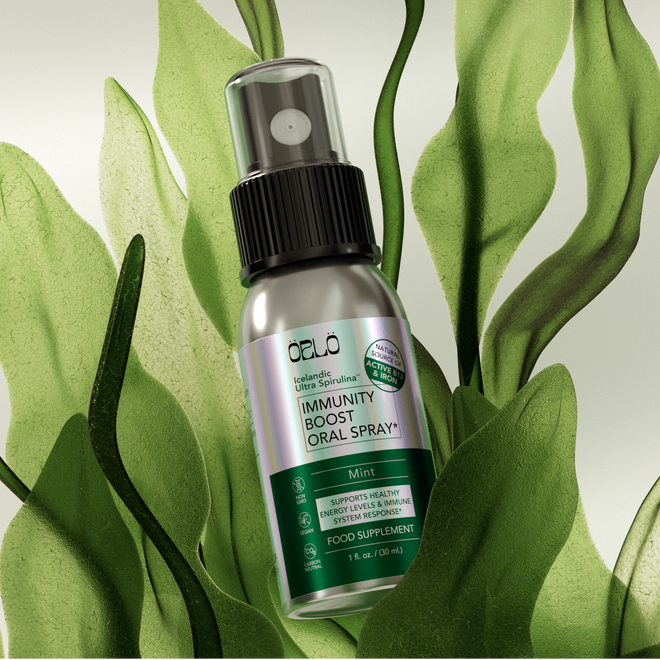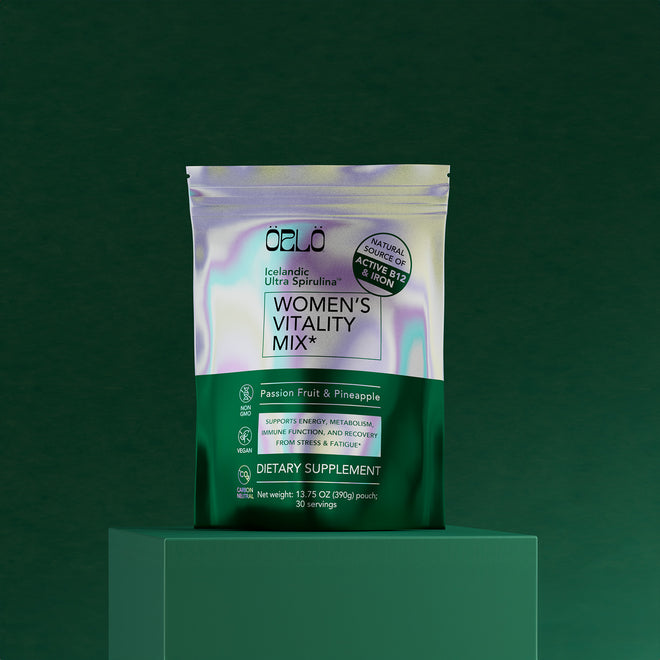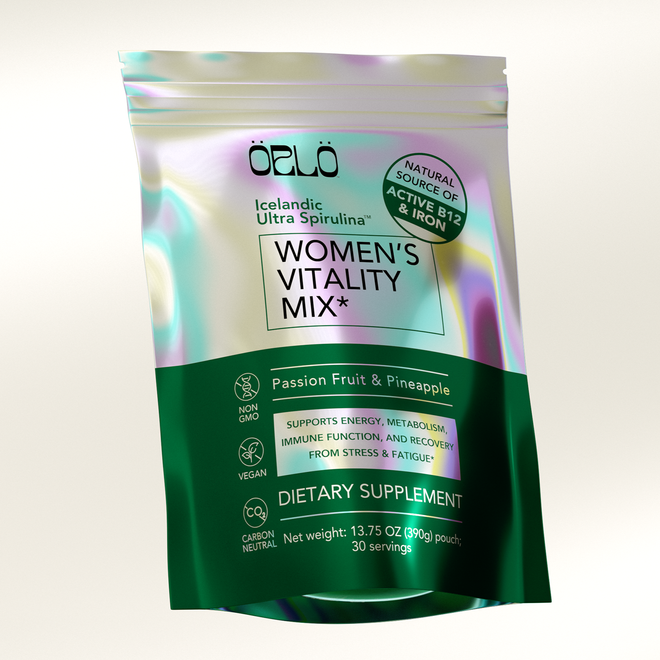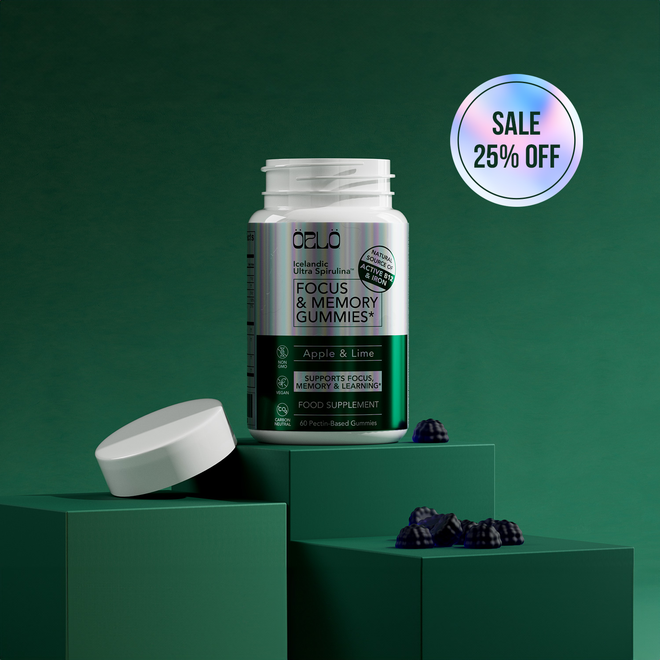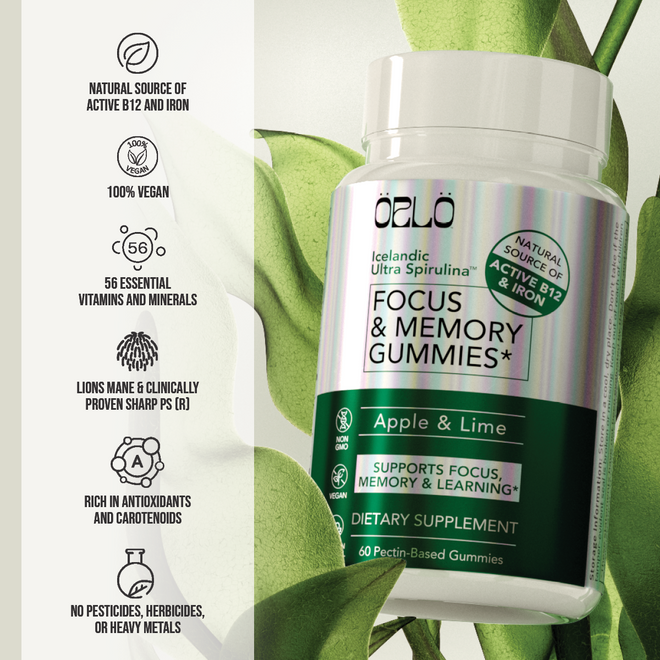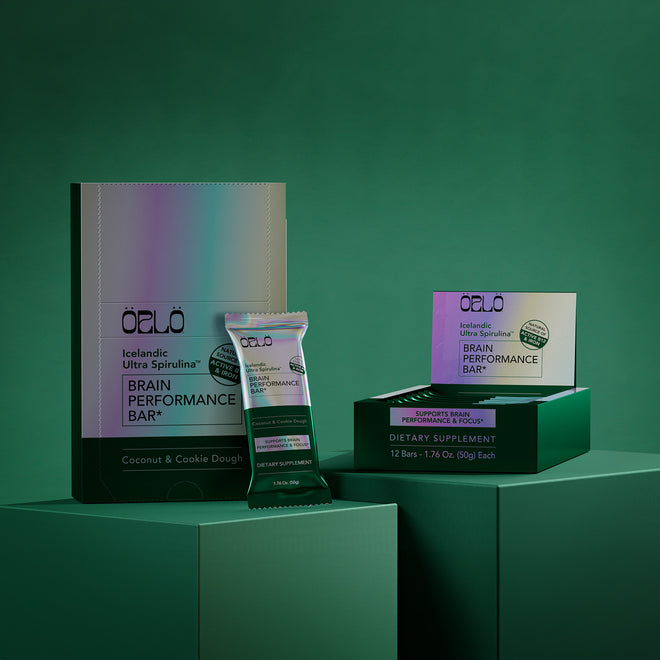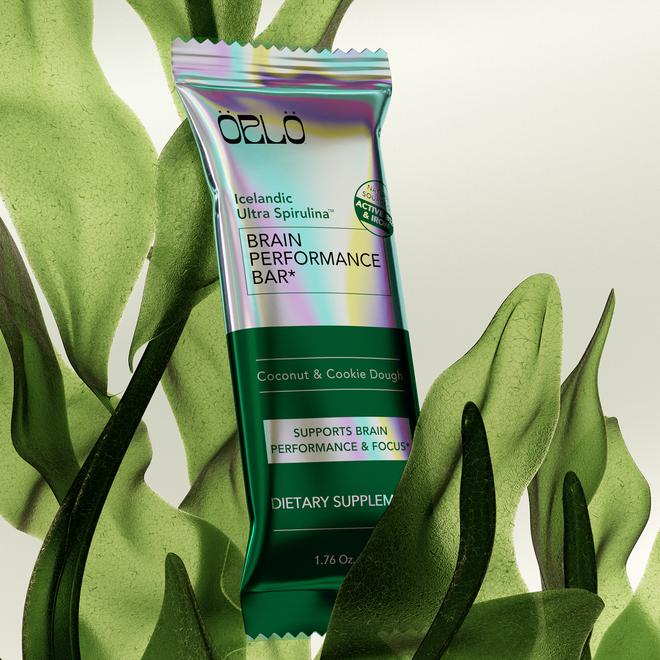25% Off - use code: HOLIDAYS
From SAD To HAPPY: Healthy, Plant-Powered Eating With Rachael Brown, Author Of For Fork's Sake
Watch the episode here
Listen to the episode here
Take your family from SAD (Standard American Diet) to HAPPY (Healthy, and Plant-Powered, Yay!). Unlock the door to vibrant health and environmental stewardship with Rachael Brown, author of For Forks Sake: A Quick Guide to Healing Yourself and the Planet Through a Plant-Based Diet. Join us as Rachael shares her transformative journey from a high-cholesterol diagnosis in her late 20s to embracing a whole food plant-based, no-oil lifestyle, inspired by seminal works like "The China Study" and "Forks Over Knives." Dive deep into the nuances of plant-based living as Rachael clarifies misconceptions, explores practical tips for transition, and extols the myriad health benefits while dispelling myths about cost and complexity. Get ready to revolutionize your plate and nourish your body and planet in this enlightening episode.
Key takeaways from this episode:
· The transformative power of a whole food plant-based, no-oil diet in addressing health concerns
· The health benefits of prioritizing whole, unprocessed plant foods
· Where to get proteins, carbohydrates, and omega-3s
· Creative ways to integrate more plants into our diet
Guest Social Links:
Website: https://forforkssakebook.com
Instagram: https://www.instagram.com/forforkssakebook/
Facebook: https://www.facebook.com/forforkssakebookcom
YouTube: https://www.youtube.com/channel/UCIMleczDqB6rP1o2KYIr8RA
LinkedIn: https://www.linkedin.com/in/rachael-brown-7090b6251/
--
From SAD To HAPPY: Healthy, Plant-Powered Eating With Rachael Brown, Author Of For Fork's Sake
We're going to dish you a fork full as we get to know the author of For Fork’s Sake: A Quick Guide to Healing Yourself and the Planet Through a Plant-Based Diet with the author Rachael Brown. She earned her plant-based nutrition certification in food and sustainability certification from the T. Colon Campbell Center for Nutrition Studies and eCornell.
After being diagnosed with high cholesterol in her late twenties, she discovered The China Study and started exploring the science of nutrition. After she ate a whole food plant-based no-oil diet for seventeen days, her cholesterol dropped a full 50 points. That's when she said goodbye to what we can call the SAD diet or the Standard American Diet for this whole food plant-based, no-oil diet.
As a licensed practitioner of massage and the pain neutralization technique, Rachael is also a certified yoga and Pilates instructor and a spiritual director who has also served as an adjunct professor in nutrition and wellness. She belongs to the University of Washington Alumni Association, Eat for the Earth, and PLANTSTRONG communities. She is happily married and has two grown children. She lives in California, where she can be found trail running, rock climbing, cycling, and bike packing with her husband.
Before we dig our forks in, remember that this show is here as a resource to educate and sometimes even entertain. It is not intended to treat, diagnose, or cure any elements. There is no patient-provider relationship established between me, your host, or our guests, including Rachael Brown. Rachel, welcome to the show.
Thanks so much for having me, Corinna.
I am glad to have yet another person in my local community with whom I can connect on topics that we both are passionate about. I wanted to start with your backstory. Tell us what inspired you to give this WFPBNO Diet a shot in the first place.
I work with that acronym because it doesn't roll off the tongue. I change it to HAPPY. You go from SAD, the Standard American Diet, to HAPPY, Healthy, And Plant-Powered Yay instead. It works easier. I grew up feeling healthy being an athlete, and I’m always active. It wasn't until my mid-twenties that I got some blood work done. My doctor told me I had high cholesterol, which was a shock because I thought I was a healthy individual. I grew up eating fruits and vegetables with every meal. We didn't eat a lot of meat. We ate cheese and dairy, but it was a surprise.
When I asked my doctor what I should do about this, he said, “You can take medication.” I didn't want to do that because my dad had always been on cholesterol medication, and he would have these odd side effects like losing his taste and having to change medications. I watched that process. I didn't want to do. I would ask what else I could do. The doctor said, “You can reduce your number of eggs, cut back on cheese, and exercise some more.” I would do those things, and my numbers would creep back up.
As you do when you're in your mid-twenties, I was busy with other things. I didn't worry about it all that much. I continue on in life. In my mid-30s, my nephew was five years old at the time, and he was diagnosed with cancer. His mom was in nursing school at the time. They had a small hobby farm. She had taught me how to pull mozzarella cheese the summer before. We had thirteen chickens. Even my daughter had a small organic egg business going.
A professor of hers asked her if she'd looked at the role of nutrition in cancer and suggested she read The China Study and watch Forks Over Knives. My sister-in-law called me. She read The China Study and watched this documentary. They changed their diet overnight. She was like, “You have to look at this stuff.” I read The China Study. My initial reaction after finishing that book was that I was angry. I was mad that nobody had ever told me this information before because I talked to doctors about what else I could do. Nobody had ever suggested that these dietary changes could have such a large impact on my health.
My family decided to watch the Forks Over Knives documentary. My kids were 6 and 8 at the time. They were young, but we decided to give this thing a try. Several years ago, there wasn't as much information on the internet about eating plant-based food. Some people had heard about what a vegan was, but it wasn't an everyday lexicon.
While doing some research, I found Dr. McDougall online. He had a live-in program at the time that you would go for twelve days and eat this way. I couldn't afford that. I had two small kids at home. We were working, but I loved Dr. McDougall and his wife, Mary. They put everything online for free. You could look at their 4,000 different recipes, print them out, and do it yourself. That's what we did. We got our blood work done. For twelve days, we ate whole food plant-based, no oil. We also eliminated coffee, which I'm not sure why we did because that's not necessary and made it even that much more difficult, but we did.
If you end up not getting enough caffeine headaches creeping in, it can make everything more uncomfortable. I want to pause for a moment and talk about the concept of plant-based versus vegan because there are some that seem to be defining plant-based as eating mostly plants. There are others that are using the terminology to mean fully vegan. Where do you sit here? Is plant-based a spectrum in your world? What do you think?
Whole food plant-based is not a spectrum. I don't understand plant-based as adding in some plants. That should be normal eating. I do understand that some people think of that as trying to add more plants. When I say whole food is plant-based, with no oil, we only eat plants. We don't eat any animal products of any sort. It's hard because sometimes you get hardcore vegans.
The reason I don't label myself as a vegan is that you can still eat Oreos, potato chips, and french fries and be vegan. That's not necessarily healthy. While I love animals, that wasn't what got me into this space. It was for the health. That's why we transitioned. Learning about the evils of factory farming certainly opened our eyes to the problem of this being in a large space.
We love animals. We no longer have chickens for eggs. Our dog passed away. We are big lovers of animals, and I'm shifting that way. I still have some leather products. I can't call myself entirely vegan. I still use some animal products that way, but I'm phasing those out. I'm not buying any new animal-based products. I use the whole food plant-based, no-oil term to mean plants for us.
I wanted to clarify what you mean when you're using these terms because I've even had prior guests who didn't define them that way. I did interview Dr. Joel Fuhrman on this show. That was my first real introduction to whole food, plant-based, no oil. I thought, “What's wrong with salad dressing? I want to put some olive oil with some balsamic vinegar on stuff.” He said, “No, full stop. I recommend no oils. I consider those processed foods. Because they’re processed, we should think about what else we could use in their place.”
He would say, “You can make a beautiful pistachio dressing with orange wedges. Throw it in the blender. It will add a lot of vibrancy and flavor to the foods that you're consuming without giving you excess fat.” This is not to say that fat is the villain here, but when you have it in oil format, it's easy to increase your intake or consider using a little bit of it to fry something with or something to that effect. Why do we turn away from oil? Can you tell us why? Everybody needs to read this more if they're going to understand.
The biggest reason is that oil is 100% fat. Most of us are not looking to add fat to our diet. If you are looking to add fat, there are fantastic ways to do that, where you can get all the good fat you need. It also comes packaged in how nature is designed. It comes packaged with fiber, minerals, and vitamins that your body uses differently. The same reason we don't use oil is the same reason you don't pour bacon grease or oil down your pipes or kitchen sink because we all know it clogs your pipes. The same thing happens in your body when you're eating oil. It clogs our pipes.
While researching my book, I talked with a chef who used to teach classes in Spain at an olive farm. He said that one tablespoon of olive oil is 40 to 50 olives, depending on the type of olives. I always tell people, “If you love olives, which I am somebody who loves olives, sit down and eat olives, but eat the whole olive. Don't eat the olive oil because you've pressed everything good out of that. You're left with the fat.”
Most of us, I don't know about you. Even if you love olives, you can't sit down and eat 40 to 50 olives in a sitting. Everybody doesn't want that much. You still enjoy healthy fats, but enjoy them in the form that nature gave them to us. Part of whole foods is avoiding processed foods. I go with Dr. Greger's definition of processed food, which is nothing taken away, nothing added in. Oil is a highly processed food. When you think about everything you're pressing out of it, it’s leaving you the fat behind.
On my website, I get this question all the time. If you go to my website and put your email in, I send you a downloadable printable guide for how to bake and cook without oil. In the beginning, it's hard to think, “How am I going to do a stir fry? How am I going to make a salad dressing?” Some of these things are easy. You don't even need replacements. You can use water to stir fry. You can use broth, tamari, soy sauce, or some other sauce you enjoy.
Dr. Fuhrman said, “You can make fantastic dressings that are as tasty and don't have all that extra fat that your body doesn't need or won't use well by adding a little tamari ground and sesame seeds.” You can use avocado. The simplest dressing in the world is equal parts mustard, whatever kind you like, and pure maple syrup. It makes a fantastic dressing. You don't need it. It is the main reason we try to avoid it.
You said a couple of things there that I want to clarify. One of them is when you refer to Dr. Greger, I think you mean Dr. Michael Greger, who wrote the book How Not to Age. He's presently doing a press tour on that. I got the chance to meet him in Santa Cruz when he was doing a book signing here. It was phenomenal. He also banged the same drum and said, “Whole foods are plant-based.” He eliminates oil. When you're talking about something like a stir fry, and you're mentioning something like soy sauce, if olive oil is a processed food, then so is soy sauce. Where do you sit on the soy sauce and other soy-type products, including tofu or protein powders?
I use soy products almost every day. A lot of the questions we have about soy have been debunked, such as the concerns about estrogen. Make sure your little boys don't have too much tofu because they're going to get too much estrogen. That's not how it works in our bodies. It's estrogen, but these phytoestrogens act differently in our bodies. We now know that estrogen in soy is protective for hormonal cancers and our health.
Some processing happens. They're going to press the beans and grind them, but they haven't added anything. In soy sauce, they add salt, but I don't think of that as the same chemical process. We don't use protein powders. If you are cooking peas, you are using a chemical process to extract things from peas and grind them into a powder. It is a highly processed food. We don't use that. If you want some protein in your smoothie, add a handful of frozen peas. You're gonna get some protein.
I'm glad you brought this up because, having transitioned to a vegetarian diet that is trending towards fully plant-based, I got the question. I met some friends for dinner and a show. It was at a pizzeria. I got the vegan pizza that they had. It was smothered in garlic cloves. I had 30 or 40 of them. Regarding your earlier comment about olives, I might eat 30 or 40 olives. I ate too much garlic, but it was marvelous.
I was asked the question, “Where are you getting your protein?” This seems to be one of the first questions that people go plant-based to get from omnivores in their community. They ask, “Where are you getting your protein?” After that, they tend to ask some other things about how you stay full. Let's start with the protein question. How do you address that?
I put a graph on page five of my book because that is the number one question that we still get. Where do you get your protein? I answer it in a variety of ways depending on who I'm talking to. We can say, “I get my protein where the largest animals in the world get their protein.” When you think about elephants, rhinoceros, or gorillas, they eat plants. That's what we eat.
I also say, “If you're eating enough calories, you are getting enough protein.” Who do you know in your life that is protein deficient? We don't know anybody who's protein deficient. Nobody is walking around with protein deficiency. Most people, if you ask them, “How much protein they should be having, they can't tell you.
We have this idea that more protein is better. If we eat more protein, we're going to build more muscles easier. It's not like you eat protein, and it becomes protein muscle in your body. That's not how it works. Excess protein, especially when it comes from animal sources, leads to all kinds of issues. You have increases in blood estrogen and free radicals. You have all kinds of things that are harmful to your body rather than helpful.
When you read The China Study and Dr. Campbell's work, this is not true with plant protein. You can eat a lot of plant protein. You can eat five times the amount of plant protein as animal protein and not have any of these effects that are poor on your health. We get protein from plant sources. Legumes, beans, lentils, nuts, seeds, grains, and greens have protein. Broccoli has more protein per ounce than beef does. I have never calculated my protein.
You can eat five times the amount of plant protein as animal protein and not have any of these effects that are poor on your health.
One of my favorite things about eating this way is not needing to count macros and micros and keep track of percentages. We eat a wide variety of plant foods. We try to make sure that we have some beans every day. If I'm feeling hungry or not satiated, I need a few more nuts, seeds, or some more beans.
The other thing is we eat a lot of carbohydrates. We love carbohydrates. I encourage people to eat more carbohydrates, but we're back to the type of carbohydrates. We're not talking simple carbohydrates like potato chips or white flour bread. We're talking about complex carbohydrates that are healthy for you and give your body the energy you need to run on.
Let's talk about that carbohydrate source for a moment because with a whole foods plant-based diet, you're not necessarily running to the pasta. Do you eat whole-grain pasta? Are whole grains a part of this? Are you exclusively relying on the more starting as raw?
No, I would say we eat a lot of pasta. A few years ago, it was hard to find anything but whole-wheat pasta. We go for whole grain as much as possible. These days, you can find lentil pasta and quinoa pasta in a regular grocery store. There are many different kinds of pasta now. Even if you can't find other kinds of pasta, whole wheat pasta is a fantastic thing. We prefer that. You have to make sure that the label of the ingredients says whole wheat, not durum, because that will be a highly processed pasta. It’s a darker color.
Semolina flour is also processed. The wheat germ is removed. It doesn't have that fiber contained within. That clears things up. As we talked about fats, there are healthy fats and unhealthy ones. I shouldn't even say unhealthy. You get too much saturated fat, and some problems occur. If you get any trans fat, some problems occur.
Processed foods tend to have trans fats in them or partially hydrogenated soybeans, palm kernels, or whatever oil happens to be. Processed foods also tend to have relatively high levels of omega-6s, which can be a precursor to arachidonic assay, which is a type of omega-6 that can create more inflammation in the body.
We tend not to get enough omega-3s. This is also true of people who are on a fully plant-based vegan or vegetarian lifestyle. Dr. Joel Fuhrman, when he came on this show, pointed to research that was conducted using the Omega-3 index, specifically on vegetarians. He found that more than 95% of vegetarians and vegans had an Omega-3 index of 3.5% to 4% when the ideal is 8% and higher, ideally between a range of 8% to 12%.
This is an indication of the actual level of omega-3s that are in your tissues that are used for all sorts of metabolic effects, including in your mitochondria, which help to create ATP energy. It’s vital for energy, brain health, and cardiovascular health. How are you ensuring that you get enough Omega-3 in your diet every day?
When we first made the switch, my cholesterol dropped 50 points. We felt fantastic. We became aware of the need for vitamin B12 because we were not getting that. There were these other question marks. D3, which I was surprised about because we live in California. I was shocked to find out that my husband, even though he cycles a lot, was not getting enough vitamin D.
It has to do with heritage, like if he has any Mediterranean in him.
In the beginning, we did take an Omega-3 supplement. I made sure it was not a fish oil. This is a big conversation with people because, for all sorts of reasons, you don't want to be sadly having fish these days. Not to mention, we don't have a lot of fish left if we keep fishing at the rate we are. We were going straight to the source. The fish get their omegas from algae. We were going to an algae supplement.
The conversation I have with people is the balance of omega-6 and omega-3. If you're eliminating processed foods and french fries or anything that you're eating that is cooked in oils, your ratio is going to change. There are natural foods that you can eat that have omega-3. We don't any longer take a supplement, but we make sure we're having walnuts and hemp hearts. We're eating chia seeds and flax seeds. These are things that we eat almost on a daily basis, especially in the beginning. For people who are still eating a lot of omega-6, to get that ratio in balance, it's a helpful thing. To make sure that you're staying on top of getting enough is important.
Research has pointed to the balance being less important and more important that you're getting sufficient omega-3 and omega-6. Even if you reduce your omega-6s, it doesn't necessarily bring the omega-3 percentage up in your tissues. I'd be curious to see, Rachael, what your omega-3 index is, given that it's difficult to get enough EPA and DHA if you're only consuming those terrestrial omega-3 sources without also consuming algae.
After working with Dr. Campbell, the other thing, and the reason we don't do a lot of supplementation, is after reading his book whole and having conversations with him about how supplements work in our body. We're back to the olive oil thing. When you extract one part of something, it doesn't work the same in our bodies. We don't do supplementation. We eat real foods and try to get everything we need that way.
Part of my message is that this way of eating is for everybody. It's not something that's more expensive and is going to take more time. This is for everybody. Making sure people know that they don't have to spend a lot of extra money or get a lot of extra supplementation is important in helping to spread the news that people can eat this way and live a healthy life.
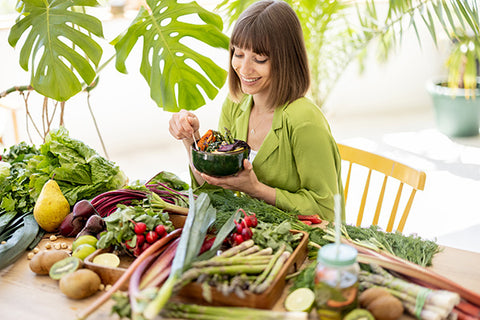
That's the reason that Örlö Nutrition was formed to create polar lipid-based omega-3, which is how your cells contain the omega-3s within your body. It improves the absorption and ensures you're getting enough. We have run some tests with vegetarian influencers who eat a whole foods plant-based diet and don't supplement. What we've consistently found is that their results also come back at 3.5% to 4% of their tissue levels. Taking a couple of soft gels a day, they're able to increase that to 6.5%, 7%, and even 8% within a matter of months taking two small soft gels. It's not a hard ask.
We're putting the proof right in front of people. What we do with this Tested By You Program is people can go ahead and go to OrloNutrition.com. You can subscribe to the Tested By You program. With your first subscription shipment of our omega-3 DHA or prenatal DHA product, you'll receive an Omega Quant Test.
It's a simple blood prick test. You've hit it with your finger. You put that on a card and send it in. It's completely third-party. They reach out to you directly after you register online with your email address, and they send you your results. Those results are yours. You can see where you are now and after four months of supplementation. It's been wildly successful, specifically for vegetarians and vegans, as their Omega-3 index has tended to be right square in the middle of what we see from the Standard American Diet, which is a surprise to many but happens to be consistent.
If you want to give this a whirl to anybody reading this, you can go to OrloNutrition.com. Readers can receive an extra 10% off by using the coupon code NWC for Nutrition Without Compromise. I'd love to transition again and talk more about shifting lifestyles to move from being more of an omnivore to a plant-based diet. Any tools you might have to help people do that if it's a step-by-step process that can help people integrate more plants as they transition if they're curious to try something like this for themselves.
I wrote the book because when we made this transition, our kids were 6 and 8. They'd been eating the Standard American Diet as we had. This was going to be a radical shift. We made many mistakes in our transition to being black and white sometimes, which led to my son eating many hot dogs and cookies at a birthday party because we weren't allowing those foods at home anymore. We learned a lot of things in several years of eating this way. I would try to give the book The China Study to people, and they would hand it back because it's scientific. It's a lot to read. I wanted to come up with an easy read so that people could get their heads around the audiobooks in under four hours.
I talk about doing the great cleanout in your kitchen. It's hard to eat things that you don't have. If you know there are some offending foods that you're trying to eliminate, it's helpful to get those out of your house. Most people are concerned about kids. This is going to be hard for their children. What I've found is kids don't have as hard of a time as adults to transition what they're eating. They might have some favorites, but in doing the research, all of our taste buds change every two weeks.
If you can give yourself two weeks of getting off the hyper-palatable foods, the goldfish, the chicken nuggets, the cookies, and packaged snacks, and if you can eliminate those for ten days to two weeks, your taste buds change. You'll have the experience of eating a pita sandwich that has hummus and fresh vegetables in it, as my son did. He took a bite and went, “Where did you get these red peppers? They're delicious.” I was thinking, “Are these new red peppers? Where did I get these red peppers?” It dawned on me. In two weeks, his taste buds were changing. Those red peppers tasted sweet because he wasn't eating things that were overly sweet.
This goes for spouses who are reluctant. If you're having a hard time making the transition, I suggest taking some of your favorite foods and looking for recipes that are whole food, plant-based, and no-oil equivalent of those foods. We did macaroni and cheese. We call it macaroni and not cheese. We made it with a cashew nut base. You can make it with oats if you would rather. We have a lasagna recipe that we make for family and friends. Nobody knows it's even plant-based. It has mushrooms that give it a meaty texture and a tofu ricotta in it. It's delicious.
You can make burgers. I have recipes in the book for those. Are you missing french fries? You can make air fries or potato wedges in the oven. It's helpful sometimes for people to do that. I also get people who don't want to do them all, or none give it a ten-day try. Some people are more slow adopters. I talk about in the book knowing yourself to think about how you've transitioned to other things in your life.
It's fine to be a slow adopter. Some people need more information and time. You can slowly add more things in and slowly get rid of things you want to get rid of. That works. Either way, it is a good plan to get to the same place. The magic of giving up some foods you don't want, animal foods, dairy, and meat for two weeks is that you will notice faster and can attribute things to your diet that you might not notice if you're spreading.
In those two weeks, many times, people will come back and say, “I'm sleeping better. My digestion is calmed down. I feel regular. I have more energy than I've had since my mid-twenties. My skin is clear. All these things that happen when you make a drastic change.” That can help people decide to continue with something once they see the immediate effects.
I had to put a disclaimer at the beginning of the book because if somebody is choosing to do this and they're on blood pressure medication or diabetes medication, insulin, you might have to reduce your medication as Dr. Joel Fuhrman does with people in as little as 24 to 48 hours. That's how fast your body can start to repair.
On average, he gets people off of something like five prescription drugs over the time of his protocol when they come to his facility, which is incredible. It's incredible that people are on that many drugs. If you can use your food as your medicine and get your health on track, that's the overarching message here. When we get our nutrition right and when we're feeding our bodies with nutrient density as one of the key components, you see things like hunger disappear.
What I will say from my personal journey is that I gave up dairy for the most part first because I learned that I was dairy-sensitive. I thought I would never be able to give up cheese. What I found was that when I stopped drinking milk, my skin cleared up. I still have a little bit of parmesan on my pasta. I enjoy that. It's the tiniest bit of condiment, which is why I wouldn't call myself fully plant-based yet.
Another element for me is that with my skin clearing up, I also felt less hormonal swings and mood swings. This is related to all the hormones that are inherently in our dairy products, even though I was mostly organic. When I went to get a latte at Starbucks, what were they using? It's not organic. You get more exposure to these sorts of things. You're having perhaps ricotta and ravioli. That's mostly made from whole milk. With an inborn sensitivity, I was breaking out. I was also having more hormonal impacts that were not positive. Adult acne is now gone for me. I'm 47. I have the clearest skin that I've ever had. That was one major effect for me.
You did the hard work first because dairy is harder to give up because of those hormones. If you think about it, as a species, we're designed to want our mother's milk. Cows calves are designed to want their mother's milk. It's like being addicted to opioids. It's that strong. It is a hard thing to give up. Good for you. That is the number one thing. Adult acne and teenage acne are the same. When my kids were teenagers, their friend’s parents started calling and saying, “What skin regimen are you using because your kids don't have acne? What is it that you're doing?” We weren't using anything. They weren't eating milk and cheese. That's a huge one.
The other thing I will say is that while I've given up most dairy, I'm allergic to casein, not whey. I still have whey protein in my cabinet, and nobody else in my house consumes it. I'm like, “I'm going to keep it around until it's gone, and I'm not going to rebuy it.” I haven't found a plant-based protein that I like. I will likely be heading right in your direction, Rachael. If I want more protein in my shake, I can throw some chickpeas or some white beans in there.
I tried out Dr. Michael Greger's suggestion of putting white beans in my oatmeal in the morning. I didn't even notice it. I did a TikTok on this because I was like, “I'm going to sample this thing he said to do. That sounds crazy. See what I think.” I mashed it in there. It was more filling. I added more protein to my diet, and it barely even changed the texture. To give you that concept, you could do something and add a white bean to a dish that is semi-regular, healthy, and whole-grain poly. It's a carbohydrate, but it's a complex carbohydrate. You add more protein to it with beans. It was delectable and great. There’s no issue. It's easy.
Under Dr. Michael Greger's definition of processed food that we would eat would be, I don't know if you've heard of PB2 powders. This is peanut butter that has had the fat removed. It's 93% fat-free. It's a powder form. You can remake peanut butter by adding a little water, and it's runny. For some people, if they were looking for more protein, you could use that to scoop into your smoothie or put it on top of something if you wanted. That's one product that we buy.
We do that because we try not to eat as much fat because my son and I carry the APOE 3 and 4 gene. Our bodies store fat efficiently. Anytime we up the nuts, we start gaining weight rapidly. That's someplace where we're careful. Adding those beans and a whole food that has protein in it is only going to help you out. It's going to help you be fuller because it's got all that fiber and all the other good stuff in it, and not just the protein. You're doing yourself a favor anytime you add a whole food form of protein if you're looking for it.
You're doing yourself a favor anytime you add a whole food form of protein.
One thing I'll also share is that when I travel on business, I find it harder to maintain my weight for that very reason unless I'm counting calories or logging it in a scrapbook of some sort. The reality is that when you are eating a whole food plant-based diet, it doesn't feel like you have to count calories. I came back from a five-day business trip to Natural Products Expo West. I sampled a lot of vegan plant-based foods on the floor, and I didn't gain a pound. I lost about 0.4 pounds on that trip, which is a rarity considering travel away from home. You're not necessarily eating what you typically would.
Some of what I was eating was more processed than what I would consume at home because I wanted to try that samosa and see what this new novel ingredient tasted like and a food application. There were a lot of interesting innovations coming out of plant-based. I wanted to experience some of those. To have no ill effect from that and no growing waistband on the trip is phenomenal.
I talk about it in the book, some tricks and tips for eating out for traveling because it does, like any new thing it can take getting used to. For eating out, it's the oil because we don't fudge on eating plant-based products. Even if you're eating vegan out, you're going to get some oil or processed cheese. We found the same thing: our bodies have adapted to this way of eating, even if we gain a few pounds. We were in France, and we ate vegan the entire time, even outside of Paris, but we gained a few pounds. Within a week, those are gone by being at home and not eating oil added to anything without counting calories or measuring what we're eating. I've never done that and won't do that.
It's lovely to not have to do that. I see people who are measuring. That takes brain energy. I want people to know that this can be easy. You don't have to be measuring, counting, and factoring in all those things. Try and eat a well-rounded. We go for more variety. Try to get those 30 different kinds of plants in your week. You can make a soup and get twenty different kinds of plants in your one soup. It's not that difficult once you start broadening your horizon on what is out there in the whole food plant-based area.

I also understand right around the time that this episode will likely come out and that you are speaking at an event in the Santa Cruz, California, area called VegFest. Hopefully, this can proceed because it's going to be the first weekend in April 2024. Can you tell us about what you'll be talking about?
I am excited to be speaking at VegFest. The title was Your Kids Can Eat Healthier, Even if it Seems Impossible: A Ten-Day Process to Make Lasting Change in Your Kitchen and Family. That's the title of my talk. I will be excited to join the stage with a lot of their wonderful presenters and people in this space. This hasn't happened since before COVID. That year, they had 5,000 people around that. I’m excited for people to come out and share some tips on how to make this the easiest thing possible for your family, kids, and anybody that you come into contact with.
I have some recipes in the book that I will share. When we were talking about kids specifically, I loved that you can eat dessert in this way of eating. It's not something you have to be careful about. One of the things in my book is a happy peanut butter ball. When I speak, I make them to share with people. It's a nut butter and oats or ground oats to flour and some dates or pure maple syrup. You can add all these other different things to it.
It makes a delicious snack. It's a great thing you can grab if you're going for a long trail run or a long bike ride. You can make these delicious things that kids will consider a dessert, but this could also be a breakfast cookie or something you take in your lunch or snack. Simple things like adding in what we would call desserts are tasty, but they have wonderful things for you in them.
Adding greens to every meal, different tips and tricks to not sneaking. I'll say sneaking things in, but not in a way that you don't tell them it's there, but in ways, you won't even notice, as you mentioned with the white beans in your oatmeal. It's nothing you would've considered before, but you don't even have to know they're there, and it's still delicious. It'll be fun to get to meet lots of people who are interested in eating vegan and being in a vegan space.
You have me remembering another author that I featured on this show who wrote the book Brownies for Breakfast. She has in that book a delicious grain-free dessert, which starts with a base of pumpkin or squash and a lot of cacao powder and maple syrup. There's a nut butter in that one to add some creaminess, but she is able to make something that sounds like a delectable treat, but that could be eaten any time of day that doesn't spike your blood sugar, and that is also vegetarian, vegan, and health-promoting.
There are many creative ways to integrate more plants into our diet and to replace some of the things that are dragging us down. I have heard over the course of the last few years as I've been on this journey, questions around things like being gassy or bloated, especially during a transition to being more plant-based. Before we wrap, I hope you can help me address that question, especially as people are thinking about bringing more beans to their diet.
It is a common complaint, especially if you haven't been eating a lot of beans. Our gut microbiomes need to be able to digest these things. If we don't have them, we need to give them time to build up. Some people will say, I can't eat cabbage because it makes me gassy. Cruciferous vegetables are the same thing. It's not only beans.
I would suggest that if you're having a hard time tolerating beans, start with lentils instead and add a couple of tablespoons each day or every other day to start out with. Work your way up. Work it up to a quarter cup of beans once you can tolerate that. The same goes for the cruciferous vegetables. Start with them steamed or cooked first, and slowly start introducing them raw. Your body will adapt. Those good bugs are going to be happy once you give them what they need. You'll find yourself wanting to eat these foods because of how you feel after you eat them.
If you're having a hard time tolerating beans, maybe start with lentils instead.
In the beginning, like many things, it'll take a transition period. Some people have been eating beans in the form of cornea burritos with beans in it. They've been eating a lot of beans. They don't experience this issue. For people who haven't been eating a lot, it can take time, but rest assured that it will go away, and you'll be feeling fantastic.
Thank you so much for joining me. Our audience has learned a thing or two that they may not have already known. I'll be sure to link with show notes to your book For Fork's Sake, which is available at ForForksSakeBook.com. You're available on all these social media channels. I'll go ahead and include links to each of those spots with show notes in our expanded blog at OrloNutrition.com. What closing thoughts would you like to leave our audience with?
I want people to know that it's not as hard as you think it might be to make this transition. I would encourage you to give yourself the gift of ten days to give this a try. Make sure you get your blood work before, try it for ten days, get your blood work after, and see how you're feeling. You don't feel your cholesterol dropping. You don't usually feel your blood sugar or blood pressure. These things you might not notice, but when you get your blood work back, you'll be astounded at what has taken place in your body.
You will notice the energy you have, the radiance other people are seeing in you, your clearer skin, your sleep, and all these other fringe benefits. Not to mention, you'll be saving money on groceries, and you'll likely be saving time once you get some batch cooking techniques down. I urge people to give themself the gift of ten days and give it a try. See how you feel. Grab a friend and do it together.
Thank you again so much for joining me.
Thank you so much. It's been a great time.
--
As promised, I will be sure to include links everywhere you can learn more about Rachael Brown and her book For Fork's Sake with show notes and in our expanded blog at OrloNutrition.com. If you enjoyed this episode, I encourage you to look back at our catalog of episodes, including the episode where I interviewed Lynne Bowmen about her book, which is specifically called Brownies for Breakfast, and also Dr. Joel Fuhrman around his work in this whole food plant-based no oil regimen. He provides some incredible resources. You might also dive into episodes with Dr. William Li, who wrote Eat To Beat Disease and Eat to Beat Your Diet, and let's keep our fingers crossed together that I can invite Dr. Michael Greger on this show to be able to talk about his important work in this space.
I'd also encourage each of you to go ahead and subscribe. Click the thumbs-up five-star rating. All of those things help us reach more people. We can do more good and help more people enjoy greater health benefits with more knowledge. Every comment, each of these things helps us to reach more people. As I close this show, I hope you'll join me as I raise a cup of my tea here to say my closing words, “Here's to your health.”
Important links
- For Fork’s Sake: A Quick Guide to Healing Yourself and the Planet Through a Plant-Based Diet
- The China Study
- Dr. Joel Fuhrman – Past Episode / Become a Nutritarian to Supercharged Your Immune System and Health with Joel Fuhrman, M.D., The 7X New York Times Best-Selling Author of Super Immunity and Eat For Life
- How Not to Age
- Brownies for Breakfast
- Lynne Bowmen – Past Episode / Brownies for Breakfast: Food Without Compromising Health With Lynne Bowmen
- Dr. William Li – Past Episode / Dr. William Li's Eat to Beat Disease Course - 10 Foods to Bolster Your 5 Health Defences
- Eat To Beat Disease
- Eat to Beat Your Diet
- https://www.Instagram.com/ForForksSakeBook/
- https://www.Facebook.com/ForForksSakeBookcom
- https://www.YouTube.com/channel/UCIMleczDqB6rP1o2KYIr8RA
- https://www.LinkedIn.com/in/Rachael-Brown-7090b6251/
About Rachael Brown

Rachael J. Brown earned her plant-based nutrition certification and food and sustainability certification from the T. Colin Campbell Center for Nutrition Studies and eCornell. After being diagnosed with high cholesterol in her late 20s, she discovered The China Study and started exploring the science of nutrition. After she ate WFPBNO for just 17 days, her cholesterol dropped 50 points. That was the beginning of her family’s journey from the standard American diet (SAD) to a whole-food, plant-based, no-oil (WFPBNO) lifestyle. A licensed practitioner of massage and the pain neutralization technique, Rachael is also a certified yoga and Pilates instructor and a spiritual director. She completed the 12-Day McDougall Program and has led corporate mindfulness seminars. She received her BA in geography from the University of Washington and has been an adjunct professor in nutrition and wellness. Rachael belongs to the University of Washington Alumni Association, the T. Colin Campbell Center for Nutrition Studies' Whole Communities program, and Eat for the Earth, as well as Plantstrong and McDougall communities. Rachael is happily married with two grown children. She lives in California, where she can usually be found trail running, rock climbing, cycling, and bikepacking with her husband. Learn more at www.forforkssakebook.com.

